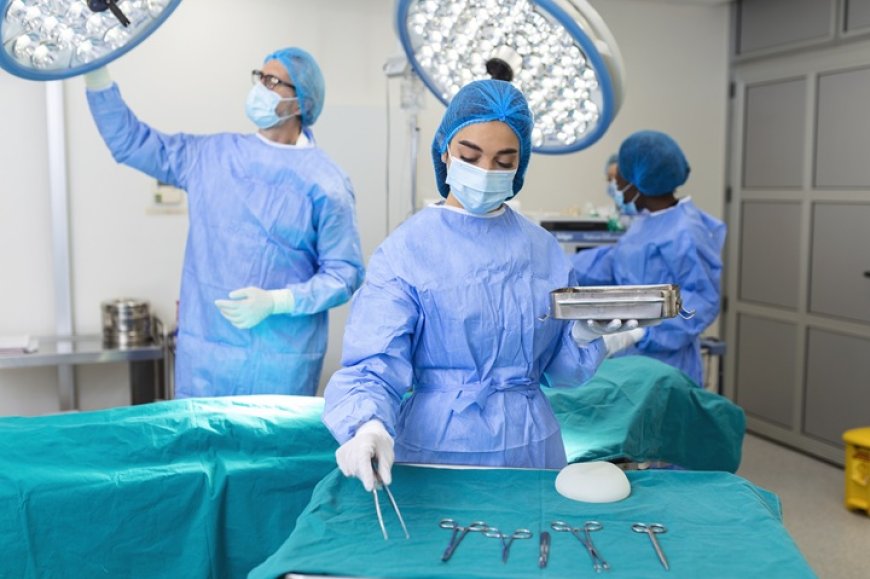Challenges and Complications of ACL Reconstruction Surgery
ACL, i.e. Anterior Cruciate Ligament reconstruction surgery is a common orthopedic procedure aimed at restoring stability to the knee joint after injury.

ACL, i.e. Anterior Cruciate Ligament reconstruction surgery is a common orthopedic procedure aimed at restoring stability to the knee joint after injury.
While the surgery is generally effective, it comes with its share of challenges and potential complications that patients should be aware of.
Challenges:
The path to recovery stage after ACL reconstruction surgery can be really tough and challenging, and patients should be well prepared for the following factors:
? Pain and Discomfort: Pain and swelling are common after surgery but usually improve with time and proper medication.
? Rehabilitation Commitment: Successful recovery requires commitment to physical therapy and rehabilitation exercises.
? Psychological Impact: Some individuals may experience emotional challenges, such as anxiety or depression, during recovery. A supportive network and open communication with healthcare providers are important.
Complications:
Complications are relatively rare but can include:
? Infection
? Graft failure
? Stiffness
? Blood Clots
? Nerve or Blood Vessel Damage
? Persistent Instability or Discomfort
Now let us discuss in detail about what challenges and complications may arise.
1. Graft Selection and Integration:
One challenge lies in the selection and integration of graft material. Surgeons often use autografts (patient's own tissue) or allografts (donor tissue) to reconstruct the ACL.
Each has its pros and cons. Autografts, commonly harvested from the patellar tendon or hamstring, may result in additional pain at the donor site.
Allografts, while avoiding this issue, may have slower integration and carry a risk of disease transmission.
2. Graft Failure:
Despite careful graft selection, graft failure can occur. This may be due to a variety of factors, including improper fixation, poor surgical technique, or biological factors affecting graft healing.
Graft failure necessitates a revision surgery, which poses additional challenges and may not guarantee the same success as the initial procedure.
3. Infection Risk:
Infection is a potential complication of any surgery, including ACL reconstruction. Despite stringent sterilization measures, the risk exists.
Infections can compromise the surgical outcome, leading to prolonged recovery times and, in severe cases, may require removal of the graft.
4. Postoperative Pain and Swelling:
Postoperative pain and swelling are common challenges faced by patients. Controlling pain is crucial for rehabilitation, and excessive swelling can limit the range of motion.
Managing pain effectively while ensuring the patient remains mobile is a delicate balance that healthcare providers must strike.
5. Stiffness and Reduced Range of Motion:
Stiffness and a reduced range of motion are potential complications, especially if postoperative rehabilitation is not diligently followed.
Scar tissue formation or inadequate physical therapy can contribute to joint stiffness, impacting the patient's ability to fully extend or flex the knee.
6. Deep Vein Thrombosis (DVT) Risk:
ACL reconstruction surgery involves a period of decreased mobility, predisposing patients to the risk of deep vein thrombosis (DVT).
Blood clots can form in the legs and pose a serious threat if they travel to the lungs. Preventative measures, such as blood thinners and early mobilization, are typically employed to mitigate this risk.
7. Nerve Damage:
Nerve damage, though rare, is a potential complication. The surgical approach and manipulation during the procedure can inadvertently damage nerves around the knee, leading to sensory or motor deficits.
Careful surgical technique and monitoring during the procedure are essential to minimize this risk.
8. Hardware Complications:
Sometimes, in some cases, the best orthopedic surgeons in Delhi may use screws or other hardware to secure the graft or stabilize the knee joint during ACL reconstruction.
Hardware complications, such as migration, breakage, or irritation, can occur. While most patients tolerate hardware well, issues may arise over time, necessitating additional intervention.
9. Rehabilitation Challenges:
Successful ACL reconstruction relies heavily on postoperative rehabilitation. Compliance with a comprehensive rehabilitation program is crucial for regaining strength, stability, and function.
Challenges arise when patients struggle with adherence, potentially leading to suboptimal outcomes or delayed recovery.
10. Psychological Impact:
The psychological impact of ACL reconstruction should not be underestimated. Patients may face anxiety, depression, or fear of reinjury.
The mental aspect of rehabilitation is integral, and a supportive environment with access to counseling or psychological assistance may be necessary for some individuals.
11. Reinjury Risk:
Despite a successful surgery, patients may face a risk of reinjury, particularly if they return to high-impact activities too quickly.
The reconstructed ACL, while providing stability, may not withstand excessive stress during the early stages of recovery. Patient education and a gradual return to activity are essential components of preventing reinjury.
Conclusion:
While ACL reconstruction surgery has significantly evolved and is generally successful, it is not without its challenges and potential complications.
A thorough understanding of these factors, along with meticulous surgical technique, patient education, and adherence to rehabilitation protocols, is vital for optimizing outcomes and minimizing risks.
Patients considering ACL reconstruction should engage in open discussions with their healthcare providers to weigh the benefits against the potential challenges and make informed decisions regarding their treatment as the ACL reconstruction surgery cost in Delhi can be a bit expensive.











































